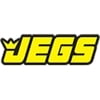 JEGS
NiCopp Tubing Coil [3/16 in. O.D. x 25 ft.]
JEGS
NiCopp Tubing Coil [3/16 in. O.D. x 25 ft.]
555-635800
![NiCopp Tubing Coil [3/16 in. O.D. x 25 ft.] NiCopp Tubing Coil [3/16 in. O.D. x 25 ft.]](http://www.jegs.com/images/photos/500/555/555-635800.jpg)



Items You Need
| Ratings |
|---|
| Price |
| Brand |
NiCopp Tubing Coils
JEGS 555-635800 NiCopp Tubing Coil Features:
- Easy to flare and seal for painless installation
- Highly flexible and easy to bend
- Constructed from 90-10 copper nickel seamless tubing
- Dot approved to be safe for use with hydraulic brake systems
- Does not rust or corrode which can happen with other types of brake lines
- 3/16 in. O.D. 90-10 Copper Nickel Seamless tubing
- DOT Approved
- Meets SAE J1047 and ISO 4038 specifications
- Does not rust or corrode
- Highly flexible, easy to bend, flare, and seal
FAQ
Is copper nickel brake line any good?
- Yes, copper nickel brake line, such as the one offered by JEGS with Part Number 555-635800, is an excellent choice for brake line applications. Nicopp tubing, a copper-nickel alloy, combines the corrosion resistance of copper with the strength of steel, making it highly durable and reliable for brake systems. It resists rust and corrosion, even in harsh environments, ensuring long-term performance and safety.
What diameter is nickel copper brake line?
- The diameter of nickel-copper brake line, also known as Nicopp tubing, can vary depending on the specific application and manufacturer. However, commonly used sizes include 3/16 inch and 1/4 inch diameters for automotive brake systems and 5/16 inch and 3/8 inch for fuel lines. These diameters provide the necessary strength and fluid capacity required for effective brake or fuel operation while allowing for flexibility and ease of installation.
What is the outside diameter of 3/16 brake line?
- The outside diameter of 3/16 brake line tubing is typically around 0.1875 inches or 4.76 millimeters. This size is commonly used in automotive brake systems for its optimal balance of strength, flexibility, and fluid capacity. JEGS offers high-quality 3/16 brake line tubing in various forms, including tubing coils, to suit your specific needs and preferences.
Why are copper brake lines illegal?
- Copper brake lines are not necessarily illegal, but they are not commonly used in modern automotive applications due to their inferior corrosion resistance compared to other materials like steel or copper-nickel alloys. Copper brake lines are prone to corrosion over time, which can compromise brake system integrity and safety. Therefore, most automotive manufacturers and industry standards recommend using materials like nicopp tubing for brake line applications to ensure long-lasting performance and reliability. Find high-quality nicopp tubing coils and brake line tubing at JEGS.com.
Specifications:
What is the max PSI they can handle? Enough for a hydroboost system?
Motor Vehicles
WARNING: Motor vehicles contain fuel, oils and fluids, battery posts, terminals and related accessories which contain lead and lead compounds and other chemicals known to the State of California to cause cancer, birth defects and other reproductive harm. These chemicals are found in vehicles, vehicle parts and accessories, both new and as replacements. When being serviced, these vehicles generate used oil, waste fluids, grease, fumes and particulates, all known to the State of California to cause cancer, birth defects, and reproductive harm.
Tools:
WARNING: Some dust created by power sanding, sawing, grinding, drilling, and other construction activities contains chemicals known to the State of California to cause cancer and birth defects or other reproductive harm. Some examples of these chemicals are: lead from lead-based paints, crystalline silica from bricks and cement and other masonry products, and arsenic and chromium from chemically treated lumber. Your risk from exposure to these chemicals varies, depending on how often you do this type of work. To reduce your exposure, work in a well-ventilated area and with approved safety equipment, such as dust masks that are specially designed to filter out microscopic particles.
Electrical Cords
WARNING: The wires of these products contain chemicals known to the State of California to cause cancer and birth defects or other reproductive harm. Wash hands after handling.

